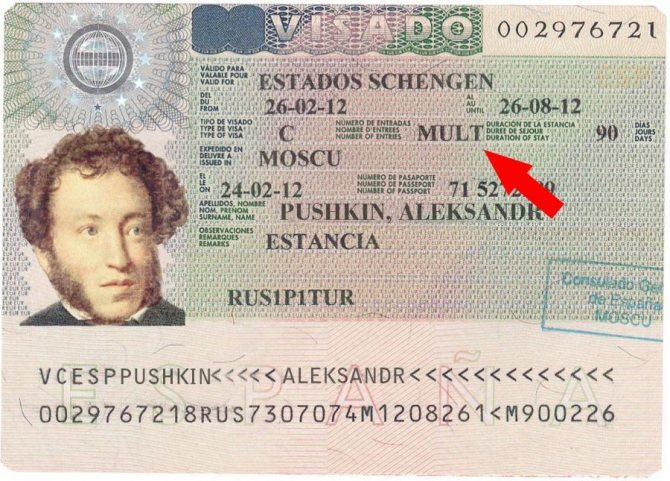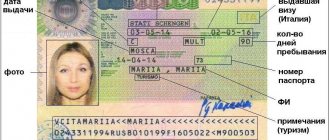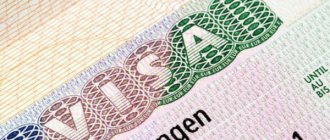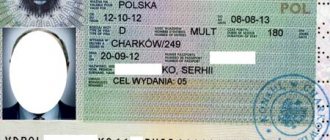Entry into the territory of the vast majority of European countries is allowed with a foreign passport, the validity of which expires no earlier than three months from the date of completion of the visit and with a Schengen visa.
Interested parties can apply for a document for a one-time visit and a so-called multiple visa, valid for six months or 12 months.
To obtain a visa, you must comply with a fairly large number of rules. In addition to the requirements for the document in question, there are conditions for foreign passports and for papers that will need to be submitted to a special center.
To understand the characteristic features of how long the passport is valid for a Schengen visa, you need to familiarize yourself with the most important conditions, the rules for the content of the document, the set of requirements for filling out, the expiration situation, as well as the most frequently asked questions.
Important Terms
The requirements for foreign passports to enter the Schengen area are fully contained in the current Visa Code of the European Union. At least 90 days must pass from the date of expiration of the pass certificate
. In accordance with this, each person must take this factor into account.
The passport must have at least two blank pages - the valid visa will be pasted into one of them. If the validity of the main document expires before the Schengen visa is issued, the application for entry will be rejected by the authorized organization.
In addition, at the time of transfer of the foreign passport to the consulate, it must be covered. It is recommended to check in advance for the absence of additional papers in the identification certificate that are in no way related to the procedure for obtaining a visa pass.
Document content rules
Schengen visas include a certain list of identifying information about the citizen, the timing and place of receipt. To obtain information about the state where the document was issued, you can check the written language.
In conditions of linguistic pluralism, of course, not everyone will be able to determine the country from the text. That is why the abbreviation with the country code is written in full in the upper right corner of the card.
As for appearance, Schengen visas are practically no different from each other. However, there are still some differences
. The main one is the typology of the document, which, in turn, is indicated to the right of the pasted photograph.
In the vast majority of cases, applicants are issued a category C document, on the basis of which they are allowed to stay in the territory of a foreign state for 3 months.
The visa also contains a special code located at the very bottom of the document. Its reading is possible only with the use of a specialized device.
Both lines include individual information:
| First line | It contains the following set of information:
|
| Second line | The following data is included:
|
Completion requirements
Authorized representatives of foreign consulates or embassies first of all make demands on the international passport itself. For example, in order to accept application documentation for immediate processing, the passport must not be older than 10 years. This condition is due to the fact that during the specified time the appearance of the document holder can change quite significantly.
The passport must not expire earlier than three months before the end of the trip. The overall validity period of the document is also important. According to the conditions of the vast majority of diplomatic missions located on the territory of the Russian Federation, the passport cannot be valid until 2050.
At the moment of crossing the state border, an entry stamp is affixed to the visa pasted into the passport. To do this, there must be free sheets of paper in the document in question.
.
Embassies set requirements for a minimum of two pages
. If a person plans to apply for a multiple-entry Schengen visa, then this space will not be enough.
The presence of mechanical damage on the document is not allowed - such a passport will simply not be accepted along with other papers for processing. However, some consulates may accept a passport, but subject to payment of a special service fee, the cost of which can reach 60 euros
. In all other situations, the passport will have to be replaced.
If a foreign document does not meet at least one of these requirements, then before applying for a visa, it is recommended to think about changing it. The procedure itself is not quick and there are certain nuances in it
. To obtain more detailed advice, you need to contact authorized specialists at the passport and visa center.
Registration cost
In Moscow, Yekaterinburg, Kazan, Krasnodar, Nizhny Novgorod, Perm, Rostov-on-Don, Samara, Saratov, Ufa
- for citizens of the Russian Federation and Ukraine – 80 €;
- for children under 6 years old – 15 €;
- for citizens of the Republic of Belarus and Kazakhstan – 120 €;
- express visa (for citizens of the Russian Federation and Ukraine) – 160 € (Moscow, Yekaterinburg).
In St. Petersburg
- for citizens of the Russian Federation – 80 €;
- for children under 6 years old – 15 €;
- for foreign citizens – 110 €;
- express visa (for citizens of the Russian Federation) – 130 €.
Cost of a visa when booking accommodation in the “Hotels and Apartments” section
What is the accepted passport validity period for a Schengen visa?
In 2021, according to the standards specified in the current Visa Code of the European Union, to obtain a Schengen visa, the passport must be valid for no more than 10 years at the time of application. The procedure for obtaining a visa document itself involves a large number of rules.
For example, citizens of the Russian Federation are not allowed to have a debt of more than 30,000 rubles, information about which is posted on the official bailiffs portal.
The validity of the passport itself should not expire earlier than 90 days before returning from the territory of the visited state.
What are the requirements for a foreign passport for a Schengen visa?
Embassies of Schengen countries put forward a number of conditions for obtaining a visa, including those that apply to a foreign passport. Without the correct international passport, documents simply will not be accepted for consideration, which means time will be lost collecting all the papers and submitting them.
These requirements can be found in the EU Visa Code. Let's look at the main ones:
- The passport must have at least 2 blank pages for stamps. And if a child is included in the passport, then you need to count on 2 more free pages for him (for a total of 4).
- If the passport was damaged: the pages were torn or torn out, covered with pen and paint, it was wet and the stamps with visas blurred.
- The passport must not expire within the next 3 months.
Blank pages in passport - If the document was issued later than 10 years before the day the person applied for a Schengen visa, he will be refused.
When the passport is submitted to the Consulate, it should not be covered. It is also recommended to ensure that no papers are inserted into it.
It is also worth remembering that correcting dates on stamps and visas is strictly prohibited. Such a violation will not go unnoticed, even if the documents are accepted for consideration at the embassy or visa center.
What to do if time is running out
The expiration of the passport for a Schengen visa may lead to certain problems due to which the interested person will not be able to cross the state border. It is known that a stock of 3 months is allowed. In some cases, the consulate may make concessions.
This is especially true if there is an urgent need to enter the Schengen area in the event of the death of one of the close relatives. However, this does not mean that a person can apply for a visa without a valid foreign passport at all. In any case, it is recommended to be prepared to urgently replace the document in question.
If the validity of the passport expires while the citizen is abroad, then you need to immediately contact the local Russian consulate to issue a new document as a matter of urgency.
Validity period of the passport
Formally, the validity of a passport for obtaining a Schengen visa must expire no later than 3 months from the date of departure from the country (i.e. from the day you leave the Schengen zone). But given that the validity of a Schengen visa is usually 3 months from the date of issue, the minimum validity of a foreign passport is most often calculated as 6 months from the date of issue of the visa.
For tourists, the minimum validity period of a passport is: 3 months from the expiration date of the visa.
Attention! It is necessary to distinguish between the duration of the visa and the time of stay in the country. For example, a visa may be valid from January 1 to March 31, 2021, and issued for a stay of 14 days
.
This means that you can enter the Schengen zone from January 1 to March 17, and stay there for no more than 14 days
. If you enter between 18 and 31 March (i.e. less than the number of days allowed for your stay), you must leave the Schengen area before your visa expires.
Hotel reservation for Schengen visa
You can apply for a new passport at your place of registration. If you are in another city, you can contact any government service department. If you are in your city, only in your registration area.
For long-term visa holders who are abroad, different rules apply. The holder of such a visa can change his passport without leaving the Schengen zone, at the Russian embassy
.
See Documents for obtaining a Schengen visa >
See Taking children abroad >
| Where to apply for a Schengen visa |
FAQ
Many citizens may be interested in questions directly related to entry into the territory of states in which the so-called Schengen agreement is in force.
Among the most popular questions, the following are especially worth considering:
| If my passport already has a valid Schengen visa, is it possible to apply for a new one? If so, will the old pass be cancelled? |
|
| Can a valid Schengen visa be transferred from an outdated passport to a new one? |
|
| Is it possible to enter the territory of other Schengen countries if a visa was obtained at the Polish Embassy? |
|
| If a Schengen visa was initially obtained to enter, for example, Estonia, then is it necessary to enter the territory of this particular state for the first time? | No, this is not necessary. It is possible to visit any state that has signed the Schengen Agreement. |
Where to get a USSR passport
? — The regulations prohibit receiving such documents, so this is impossible.
See here how many photos you need to replace your passport.
Read on to learn how to get a Russian passport.
A Schengen visa allows its holder to enter 26 European countries and move freely between them. A visa is issued through the consulate of one of the states that have signed the Schengen Agreement
.
It is through this country that you will need to cross the border of the Schengen zone. The length of stay inside it usually ranges from 30 days to 5 years and is determined depending on the purpose of the trip and other factors
. How long a Schengen visa is issued, that is, its validity period and duration of stay in the zone, is indicated by a certain category of document.
Visa validity and period of stay - what's the difference?
The validity period of the visa (also called the visa corridor) determines from what date you can enter the country and by what date you must leave it (in the case of multiple-entry visas, the dates “from” to “denote from what moment you can begin your first trip, and by what date should you finish the last one). And the period of stay is the maximum number of days you can spend in the country within the validity period of the visa and, at the same time, during each 180-day period. German visas are issued on the dates specified in the invitation or hotel confirmation. The visa corridor can be increased by 15 days if you have an insurance policy with an additional 15 days paid.
Factors influencing the timing of a Schengen visa
There are several categories of Schengen visas depending on:
- Multiplicity of permits - single and multiple entries (multiple visa).
- Purposes of the trip: category A – transit crossing the borders of the country when flying to a third country;
- category B – crossing borders by land transport with the possibility of staying up to 5 days;
- category C – tourism, visiting relatives, work trip, study or treatment with different validity periods;
- category D – residence permit for up to 5 years;
- LTV – visa with limited area of validity;
- simplified transit documents (FTD/FRTD) – for Russians crossing the border of the Kaliningrad region.
A single-entry visa allows you to enter the country once, and you can cross its border within the Schengen zone without restrictions. This type of visa can be obtained if the trip is tourist, guest, business or transit.
The length of stay for a single permit can be:
- 3–90 days – short-term visa;
- more than 90 days – long-term visa for work or study.
Those who do not know for how long a Schengen visa is issued for the first time are advised to pay attention to the stated travel dates. Most likely, the validity period of the visa will coincide with the specified dates.
Submitting documents for a certain category of Schengen visa does not guarantee that a person traveling abroad will be able to obtain it. Quite often there are situations when, by requesting, for example, a multiple visa, the applicant receives a one-time permit to cross the border of a foreign state.
What can affect the timing
The following circumstances may affect the period for which a visa will be issued:
- Applicant's visa history. Difficulties in obtaining a Schengen visa may arise if a person previously violated the rules when crossing the borders of another country or staying on its territory.
- Already existing Schengen visas in your passport - the more there are, the higher the likelihood of getting a long-term Schengen visa.
- Social, professional and family status of the applicant. A family man with children who has a profitable, well-paid position in the country of residence has a better chance of getting a Schengen visa.
- Completeness of the package of documents and the accuracy of the information provided to the consulate.
Additional documents confirming the financial solvency of the person traveling abroad and the absence of reasons for him to remain for permanent residence in the Schengen area increase the chances of obtaining a visa.
It can be:
- certificate of income from the place of work of the applicant or his sponsor;
- documents for real estate, car or other property;
- certificate of availability of a bank account;
- return tickets;
- document confirming payment for the hotel or availability of a reserved room.
It is also better to play it safe and be sure to check if you have any debts on loans, taxes, fines or alimony.
Validity
There are several categories of permits to visit European countries. The division is based on the factors listed below.
By number of trips:
- One-time use.
- Multiple.
Purpose of entry:
- A – crossing the border by plane to another country;
- B – arrival by land transport with a permissible stay of no more than 5 days;
- C – tourist trips, connecting with relatives, treatment abroad, study, business trips for various periods;
- D – residence visa, no more than 5 years;
- LTV – limited entry visa for a specified period of time;
- simplified transit for Russian citizens crossing the border of the Kaliningrad region.
A single-entry visa gives permission to visit the state once, but in the Schengen group you can cross borders without any restrictions. You can apply for such a visa if you are traveling somewhere, for work, on a visit or as a tourist.
The period of stay in the country with a single-entry visa can be:
- From 3 days to 3 months – with short-term resolution.
- More than 3 months - with a long-term visa for study or business.
Typically, the validity period of the issued permit coincides with the stated travel dates. If you have submitted an application and want to obtain a Schengen visa, this does not guarantee the successful completion of the entire procedure. It often happens that a citizen applies for a multiple-entry visa, but as a result he is only approved for a single visit to the state.
Do you want to get EU citizenship in 12 months? Take the free test and find out your chances.
Schengen visa with corridor
The validity period of the visa document may not coincide with the number of days that the traveler is allowed to spend in the Schengen area. In this case, they talk about a visa corridor. That is, if the maximum period of a Schengen visa is, for example, 90 days (fields “From ...”, “To ...”), and the period of stay (“Duration of stay ... days”) is indicated as 30 days, this means that in fact the total During the specified period, you can stay in the country for only 30 days, and you are allowed to cross its border several times.
Such a visa is a multiple-entry or multiple entry visa, and is designated by the abbreviation MULT.
Rules for obtaining a multiple visa

According to Art. 24 of the EU Visa Code, the conditions for issuing a multiple permit are as follows:
- It is no longer possible to obtain a long-term multi-Schengen the first time.
- First you need to apply for a single-entry visa. They will be issued strictly for the period of travel (there may be rare exceptions). You can apply 3 times in a row within 2 years. And then the validity period of the next document will be 1 year.
- Then registration is allowed for 2 years. The new rules do not provide for a reduction in the duration of a Schengen visa. A 1-year permit issued within the last 24 months must be used without violations.
- At the final stage, it will be possible to obtain a multi-Schengen visa for 5 years. The condition must be met that during the last 3 years the applicant has conscientiously used a 2-year multiple visa.
According to the new standard, it is excluded that a citizen who used a document of a certain duration (for example, 1 year) will receive not the same visa, but with a shorter period (for six months, for example).
According to the end of 2021, documents for long-term stay were issued by France, Finland and Greece. And other EU countries mainly issued stamps with a short period of stay and validity.
You may be interested in: Visa to Latvia for Russians 2021: cost, terms and types of permit
Now each EU state will issue a multi-Schengen visa only after foreigners have fulfilled the established rules, taking into account the visa history of other participants in the Schengen agreement.
Validity period of a Schengen multiple visa
A Schengen multiple visa gives its holder the right to repeatedly enter the territory of a certain Schengen state and move within the zone. You can open a multiple visa for a period from 6 months to 5 years.
In this case, either the total duration of days of stay is specifically indicated, or the condition must be met: within six months, the total duration of stay in the country should not exceed 90 days. The document may also indicate how many entries are allowed - such a multiple visa is called limited
. More details in a separate material “Schengen multiple visa”.
Features of the Schengen multiple visa for six months
A six-month multiple-entry visa to the Schengen area is an excellent opportunity for tourists and those who need to travel abroad frequently. This type of document is one of the most accessible, especially if your passport for the last 3 years already has a single or double Schengen visa valid for up to 30 days.
A Schengen visa for six months belongs to category C, that is, it is issued for the purposes of tourism, visiting relatives or solving work issues in the territory of the Schengen countries. Based on the length of stay, this document is classified as C2 - in six months you are allowed to stay in the country for no more than 90 days (180/90). At the same time, you can cross the Schengen border several times.
Reasons for obtaining a Schengen multiple visa for a year
A multiple-entry visa to Schengen countries valid for a year is undoubtedly convenient and practical, because it allows you to visit European countries for a whole year, while eliminating the constant hassle of submitting documents and waiting for permission. In order to obtain a Schengen multiple visa for a year, you need special reasons:
- business contacts or family ties with citizens of the host country;
- presence of real estate or business in the Schengen area;
- obtaining education or employment in one of the Schengen countries.
It is much easier to obtain a multiple visa for a year, provided that over the past couple of years the passport already contains marks of visiting countries that have signed the Schengen Agreement.
A multiple-entry annual visa has limitations: despite its name, this document allows Russian citizens to spend no more than 3 months every six months in the Schengen area, that is, 180 days (6 months) for the entire year. The period of stay can also be 45 or 60 days for each half-year or 90 or 120 days for the whole year.
Registration of a Schengen multiple visa for 2 years
You can get a Schengen multiple visa for 2 years if you have recently received at least one annual permit to visit Schengen countries. At the same time, as with an annual multiple visa, you need quite compelling reasons to open a visa: these could be documents confirming an official or professional need, an invitation from relatives, a call to participate in a conference, conduct scientific research or medical care.
The period of stay in Schengen on a two-year visa is also a maximum of 90 days for every six months.
Obtaining a Schengen multiple visa for 3 years
A multiple-entry three-year Schengen visa belongs to category C. This stamp allows you to travel within the Schengen countries for 3 years without issuing additional documents
. Just as in previous cases, there is a restriction on stay in the Schengen zone - 90 days in six months.
In order to get a Schengen visa for 3 years, do not forget to provide the consulate with copies of previously used Schengen multiple visas, otherwise you risk being left without permission. Documents confirming the need and expediency of regular visits to Schengen states for three years will also increase the likelihood of a positive decision from the consulate.
How to get a Schengen multiple visa for 5 years
Citizens of Russia and the CIS countries are given a Schengen multiple visa for a period of 5 years only after they first receive a short-term permit for 1 year, then extend it for 2, and then for 3 years. After the expiration of a three-year visa, it becomes possible to obtain a stamp valid for up to 5 years (category C4).
A five-year multiple visa is issued to those who have sufficient grounds for a long-term stay in the Schengen area, for example, official work, university studies or regular tourist trips to Europe.
In order to be guaranteed to receive a long-term multiple-entry Schengen visa, it is advisable to know which country gives Schengen for 5 years to Russians most often and most willingly.
Top countries where it is easiest to obtain a multiple entry permit:
- Greece,
- France,
- Spain,
- Italy,
- Slovakia,
- Finland.
Having received permission from the consulate of one of these countries, it is recommended to adhere to the rule of first entry: enter the Schengen zone through the country whose consulate issued the visa. It is also worth paying attention to the fact that the duration of the trip coincides with the specified period of stay.
. The Slovak, Spanish and Finnish authorities monitor this fact especially strictly.
In order to independently apply for a five-year Schengen visa, you need to personally submit documents to the visa center:
- foreign and internal passports, their photocopies;
- 2 photographs according to a special standard;
- invitation to visit (if available);
- certificate from the place of work;
- a copy of the work book;
- a bank account statement containing at least 581 euros per person;
- marriage certificates, birth certificates;
- health insurance.
You can download in advance from online resources, print and fill out a form and consent to the processing of personal data.
If you don’t want to bother with applying for a Schengen multiple visa yourself, you can always contact specialized companies or travel agencies. The price of the service will be higher, but it will eliminate unnecessary hassle and save time.
for Schengen visa
The Schengen zone operates much like a single state, with border controls on the external border when you enter and leave and no border controls on the internal borders of the states included in this zone.
Thus, a Schengen visa gives the right to freely visit all countries that are part of the Schengen zone. Cool, right? The Schengen area includes twenty-six European countries. Belgium, France, Germany, Luxembourg, the Netherlands, Portugal, Spain, Italy, Austria, Greece, Denmark, Finland, Sweden, Iceland, Norway, Czech Republic, Estonia, Hungary, Latvia, Lithuania, Malta, Poland, Slovakia, Slovenia, Switzerland, Liechtenstein. Please note that Great Britain and Ireland are not part of the Schengen zone, and to visit these countries you must obtain national visas.
You should take into account the fact that Europeans are very jealous of their national territories. This is reflected in the “rule of first entry into the territory of the Schengen zone.” Contrary to many disputes, such a rule does exist and is more advisory than prescriptive in nature. According to this recommendation, a tourist planning to visit the territories of several member states of the Schengen agreement must apply for a visa at the consulate of the country whose territory he plans to visit first. However, it is worth remembering that you can visit countries along the route in transit, especially if there is no common border between your country and the country that issued your visa. And all this applies only to the first entry. The rest of your trips to Europe with a multiple-entry Schengen visa will be accepted with joy by Europeans. In EU Schengen legislation there is also a main country rule, sometimes called the “maximum presence rule” . It boils down to the fact that in the country whose embassy issued you a visa, you must stay longer in total than in all other countries you visit. Hence our advice , if it turns out that for some serious reason you had to visit your grandmother in Poland, and you were issued a visa at the Lithuanian consulate, then you can always refer to the fact that you plan the remaining days allotted to you by the visa spend it in the country that issued your visa. The main thing is to have supporting documents with you.
You must not forget that in the Schengen countries, a unified record of incoming citizens is maintained. If a foreign citizen has committed any kind of violation in one of the Schengen countries, then his data will be entered into a single database, and in the future this may cause trouble when visiting any country in the Schengen zone or serve as a reason for refusing to issue a Schengen visa. When applying for a Schengen visa, your data is checked against three databases. This is the main Schengen base; European Union database; National database of the country at whose consulate you are applying for a Schengen visa.
Schengen visa categories
Type “A” – Airport transit visa. Issued to those who travel by air in transit through a country participating in the Schengen legislation. It implies permission to stay in the transit zone of an airport in a Schengen member country, but does not give the right to move within the country. This type is mandatory for citizens of the following countries: Afghanistan, Bangladesh, Ghana, Iraq, Iran, Democratic Republic of Congo, Nigeria, Pakistan, Somalia, Sri Lanka, Eritrea, Ethiopia.
Remember , participating states have the right to extend the requirement for an airport visa to travel through international airports on their territory to citizens of other states at their discretion. An airport transit visa is not necessary if you have a Schengen visa type “C”
Type “C” is a short-term visa, valid for one or more entries. A “C” visa, issued by a state implementing Schengen legislation, gives the right to enter and travel throughout the Schengen area.
Based on the number of entries, the Schengen visa type “C” is divided into single, double and multiple entry visas.
Depending on the purpose of the visit, the following visas are issued:
Tourist visa. Issued when making private trips for tourism purposes. The validity dates of the visa and the number of days of stay in the Schengen area directly depend on the travel documents provided to the consulate (vouchers, tickets, invitations from tourist organizations, partial or full payment for a hotel, etc.). Basically, it is issued for a single visit for a period of 1 to 15/21 days (depending on the tour program);
Visitor visa. It is issued on the basis of a special invitation from friends, relatives or other individuals. persons (as a rule, such an invitation must be certified by the migration service of the country where you are being invited). The frequency of trips and the validity period of such a visa will be determined by the consulate depending on the country of destination, the solvency of the applicant and inviting person, living conditions, etc.;
Business visa – required when visiting a Schengen country for business reasons. This could be negotiations, consultations, visiting exhibitions and seminars, clients and partners, purchasing or selling goods, carrying out commodity-monetary transactions, etc. The basis for obtaining such a visa may be an official invitation from a business partner or another commercial or non-profit organization with a detailed statement of the purposes of the visit and justification for the need for the applicant to visit the country of destination. This visa can be single or multiple. It is issued for a period of 15 to 180 days of stay in Schengen. There have been cases when such a visa was issued for 2 years.
Document requirements:
Passport requirements:
- The passport must be intact and clean;
- The date of issue is no more than 10 years old at the time of filing and preferably a new sample;
- The passport must expire no earlier than 3 months after the expiration of the requested visa.
- The passport must have at least two completely blank pages in the “VISA” sections (for the visa itself and for border crossing stamps).
Photo requirements:
- A passport-size color photograph from which a person can be identified;
- The photograph is no more than 6 months old, photograph size is 35X45 mm or 40X50mm;
- The background color should be light;
- The photograph must be clear, the position of the head is frontal (face straight);
- The facial expression should be neutral, the eyes should be open, and the gaze should be aimed directly at the camera lens.
Requirements for an insurance policy for traveling abroad:
- The insurance policy must cover the entire duration of the requested visa and the entire Schengen area.
- The policy must have a sum insured limit of at least 30,000 euros, and it must cover expenses in emergency cases of illness or accident, including the cost of medical repatriation to the insured person's place of permanent residence or post-mortem repatriation (check with your insurance agent).
Confirmation of financial solvency:
- Certificate from the place of work. Indicate the date of the corresponding entry in the work book about hiring in the case of an employment agreement, its expiration date;
- Bank statement about the availability of funds;
- Traveler's checks (link https://belarusbank.by/ru/valuta/travellers_cheque) in the amount of 40 Euros for each day of stay;
- A letter of sponsorship and a certificate of income of the sponsor or a bank statement and a photocopy of the sponsor's passport;
- For individual entrepreneurs - a photocopy of the registration certificate.
Information about transport can include:
- Open booking;
- Tickets including electronic ones;
- The passport must expire no earlier than 3 months after the expiration of the requested visa.
- A copy of the vehicle registration certificate (power of attorney, if not the owner) and a copy of the driver’s license (visa of the driver with whom the trip is planned);
- A written explanation to the consulate about the planned entry and exit if it is not possible to provide documentary evidence.
Addresses and contacts of foreign institutions
Consular Section of the Embassy of the Republic of Poland in Minsk
220002, Minsk, st. Kropotkina, 91-A tel.: +(37517) 2849980; 2849981fax: +(37517) 3342934 fill out or register a visa HERE Website of the Embassy of the Republic of Poland in Minsk: https://www.minsk.polemb.net Reception hours: Monday - Friday 9.00 - 14.00 Cash desk opening hours for accepting payments for consideration of applications: strictly until 14.00 Time for issuing passports with visas: Monday - Friday 15.00 - 16.15
Consulate General of the Republic of Poland in Grodno
230023, Grodno, st. Budennogo 48A, tel.: +(375152)751595, fax: +(375152) 751587 fill out or register a visa HERE Website of the Consulate General of Poland in Grodno: https://www.grodnokg.polemb.net Reception hours: Monday - Friday 09.00 - 14.00 Time for issuing passports with visas: Monday - Friday 15.30 - 16.30
Consulate General of the Republic of Poland in Brest
224016, Brest.ul. Kuibysheva 34, tel.: +(375162) 270021, fax: +(375162) 203829 fill out or register a visa HERE Website of the Consulate General of Poland in Brest: https://www.brzesckg.polemb.net Reception hours: Monday - Friday 09.00 - 14.00 Time for issuing passports with visas: Monday - Friday 15.00 - 16.15
Embassy of the Republic of Estonia in Minsk
220034, Minsk, st. Platonova 1B, tel.: + (37517) 2177060, fax: +(37517) 2177069 fill out a visa HERE register to submit documents HERE Website of the Estonian Embassy in Minsk: https://www.estemb.by /rus Reception hours: Monday - Thursday 9.30 - 12.30 strictly by appointment. Time for issuing passports with visas: Monday - Thursday 15.00 - 16.00
Cost of obtaining a Schengen visa
A personal application to the relevant consulate to obtain a Schengen visa will cost an applicant from the Russian Federation 35 euros - this is the cost of the consular fee. When submitting documents through a visa center, you also need to pay a service fee, which will be about 20 euros. Additional services (courier, translation, filling out forms) may also be paid
. And if you want to get the coveted stamp faster than it takes to process a standard request, you will have to pay double the price.
Applying for a Schengen visa in 2021 will not be possible without medical insurance, which will cost 1–2 euros per day.
Cost of a visa to France
When purchasing a tour through a tour operator
- for citizens of the Russian Federation
-
70-80
€ - for children under 6 years old
(regardless of whether they have their own passport or are registered with their parents) -
0-30
€
When submitting documents independently through the Consulate
- for citizens of the countries: Russian Federation, Ukraine, Former Yugoslav Republic of Macedonia, Albania, Montenegro, Serbia, Moldova and Bosnia and Herzegovina, Georgia - 35
€ - for citizens of other countries - 60
€ - for children under 6 years old
-
free
When submitting documents independently through a visa center (VFS Visa Facilitation Service)
- for citizens of the countries: Russian Federation, Ukraine, Former Yugoslav Republic of Macedonia, Albania, Montenegro, Serbia, Moldova and Bosnia and Herzegovina, Georgia - 35
€ + service fee -
29.5
€ - for citizens of other countries - 60
€ + service fee -
29.5
€ - for children under 6 years old -
service fee -
29.5
€
Bottom line
A Schengen visa is an excellent option to visit half of Europe by submitting a package of necessary documents and waiting for permission just once. Any category of document allows you to travel to all countries of the Schengen area if you have received permission to enter at least one of them.
Careful preparation of a package of documents will help increase your chances of obtaining a Schengen visa. It is better to carefully study the list of required certificates and photocopies in advance so that you have time to prepare them. Also recommended:
- specify the language into which documents need to be translated;
- questionnaire and fill it out in advance;
- register at the consulate or visa center;
- submit documents in advance so that you have the opportunity to deliver the necessary papers or make corrections.
The main thing is to set a clear goal and persistently follow it, and then you will be guaranteed a Schengen visa.









